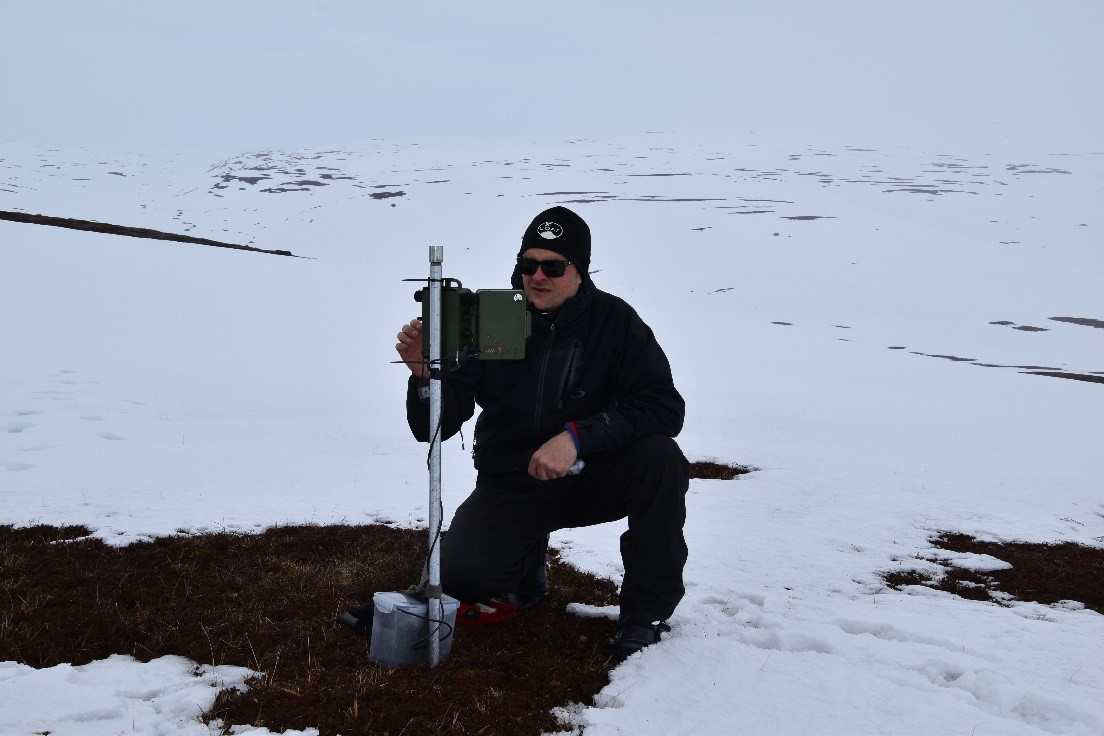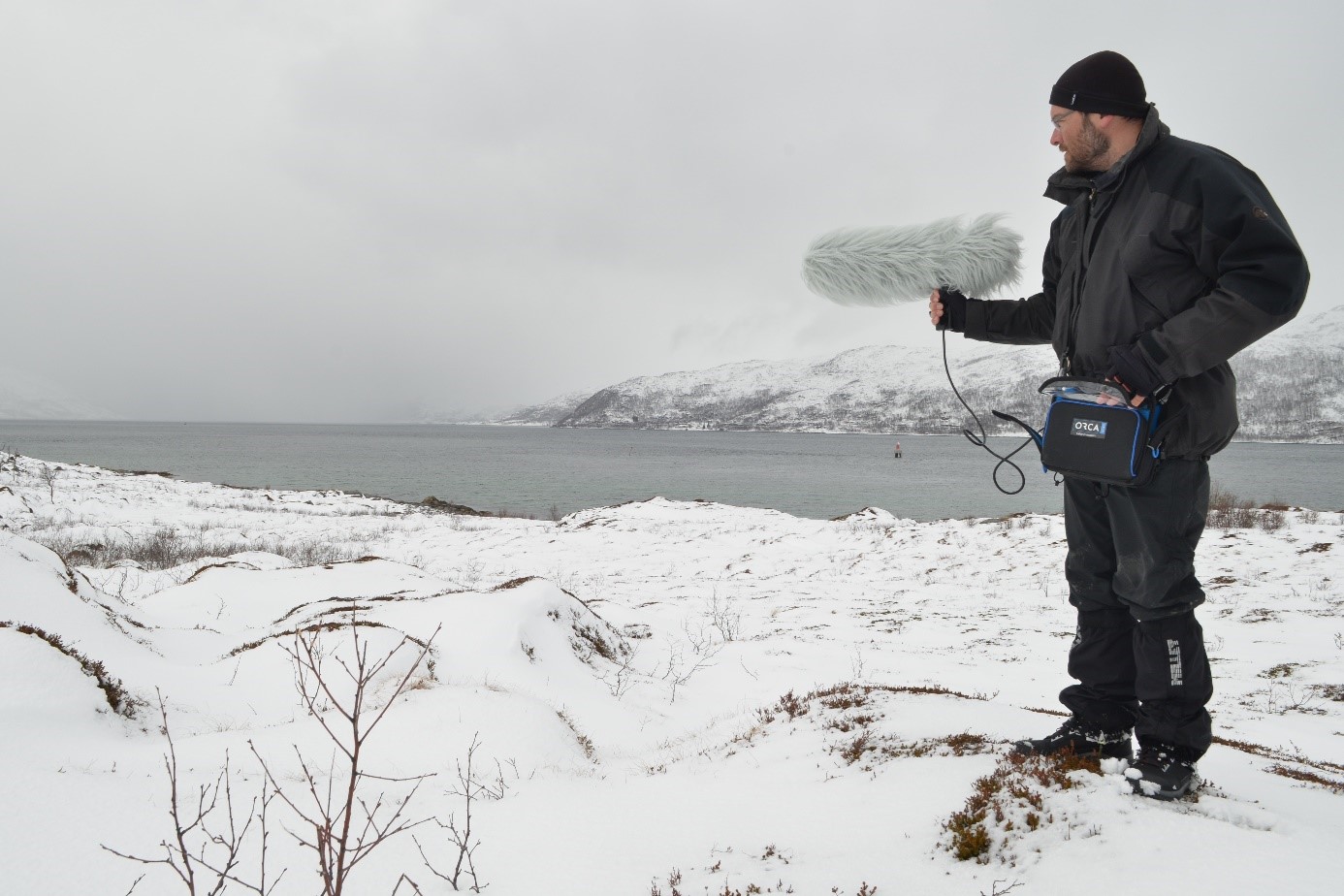Members of COAT Varanger’s ptarmigan module has recently deployed the sound stations for this year’s monitoring in the study area just above Bergebydalen in Nesseby municipality. This work started back in 2017, and this is therefore the 6th years of monitoring the two arctic ptarmigan species by use of bioacoustics.
Recording of a sample of unique ptarmigan males to use for the search for the part of the ptarmigan calls that code for individual information. This will be used to develop automatic procedures for individual recognition. Photo: Bertrand Muffat-Joly
This year we also, for the first time, deployed soundboxes in the Komag study site. We are hence excited to “hear” the results from Komag, and see whether the state of ptarmigan are the same as in Vestre Jakobselv. The sound stations are used for the complementary monitoring of willow and rock ptarmigan in the period when the cocks are territorial, i.e. the breeding part of the population of males, as we also monitor predation risk in the summer and chick production in early autumn. This year’s deployment went quite well, even though the spring was well on its way, with mild weather on Varanger peninsula in the weeks preceding the fieldwork. Luckily, low night temperatures secured the deployment of all the soundboxes in both study sites.

Deployment of soundboxes for the first time in Komag and for the 6th year in Vestre Jakobselv. Photo: Jan Erik Knutsen
Bioacoustics
To help us develop automatic procedures for extracting species information from the waste amount of sound recordings we have gathered during the last 5 years, we have started a formal collaboration with a bioacoustics research group at the University of St Etienne in France. This formal collaboration has resulted in a post doc for 2 years, that is currently working on the ptarmigan data. Hence, this year we had 3 researchers in bioacoustics and pattern recognition visiting from France joining our winter field work. They wanted to see our field sites to better understand the design, experience the many challenges (i.e. sources of noise (e.g. wind)) of recording in the Tundra, but also to record a sample of unique birds to improve the algorithms for individual recognition. However, because of bad weather with a lot of wind and that males were not very territorial yet, high quality recordings of ptarmigan males was difficult. We therefor returned to Tromsø, 2 days early, to complete recording of males in the vicinity of Tromsø. In Tromsø we even managed to record some males of Svalbard Rock ptarmigan in the new and wonderful ptarmigan facility of the Arctic Chronobiology and Physiology research group.

Recording of ptarmigan sounds in the surroundings of Tromsø. Photo: Bertrand Muffat-Joly